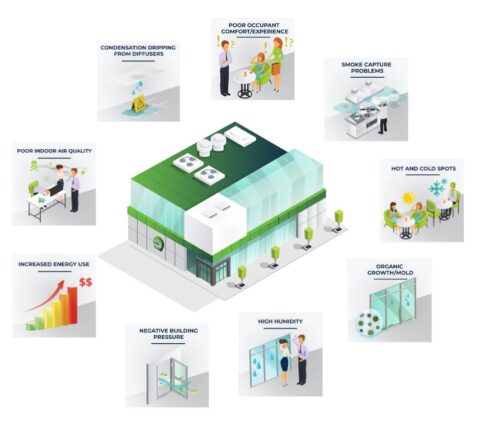Sick building syndrome is a condition that affects a building’s occupant due to unhealthy factors in the work environment primarily associated with poor ventilation and airflow in the facility. Per the EPA, symptoms of Sick Building syndrome include acute discomfort such as headaches, dry skin, coughing, dizziness, and nausea. Despite all these symptoms Sick Building syndrome can go undetected for years as the symptoms are all relatively minor and occur over multiple years.
With the release of Melink PositiV™ earlier this year, facility managers can now remotely diagnose and asses 4 of the key building metrics that contribute to building health. These include CO2, relative humidity, building pressure, and temperature. By ensuring these 4-building metrics are within acceptable ranges facility managers can sleep well knowing that they will be able to monitor and track if their facility is showing early signs of sick building syndrome. This can empower the end user to act and stop the early patterns that can lead to numerous issues down the road.
You know it is time to act when one of the 4 measurements are outside of the recommended limits. A primary way of attempting to correct any of these issues in a facility is to have a test and balance to reset airflow to the engineered design plans. During a test and balance, existing issues are identified and corrected to allow for proper airflow into the space. Through this process the technician should be examining and resetting the outside air dampers at the facility to allow the building to receive the correct amount of fresh air. The combination of monitoring and acting on the data allows end-users to ensure comfortable, healthy and energy efficient facilities.
